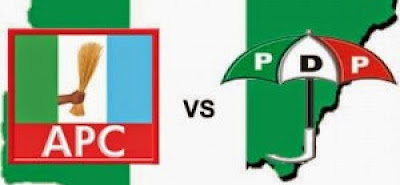PCI Series: Osun 2018: Two main parties’ high powerful campaign committees and implications on the electorate
With
16 days to the Osun 2018 governorship election, political parties and
candidates have intensified their campaigns with a view to winning the minds of
the voters in the state before September 22. The All Progressives Congress, the
ruling party and the People’s Democratic Party, the main opposition in the
state are not leaving any stone unturned towards getting maximum votes in an
election that has been described as the make or mar competition for the two
parties as the country goes to polls in 2019 for the general elections. Public
analysts believe that Osun 2018 will be a litmus test for the APC survival in
the South West region. Already, the two political parties have formed
high-powerful campaign committees that will oversee campaign activities during
the remaining days of the campaign period. The ruling party announced a
63-member committee few days ago. People’s Democratic Party has also informed
the public especially Osun indigenes of its readiness to deploy 44 members of
the party for campaign activities in the state. Members of the APC’s committee
are predominantly governors, ministers and members of parliament at the state and
federal level while the PDP has present governors and former political leaders.
The PDP’s committee will be chaired by Senator Bukola Saraki, the Senate
President, who defected from the ruling party to the PDP recently.
The
goal for the two committees is to ensure victory for their candidates. The goal
that would be better achieved when the parties, their candidates and supporters
make the campaigns issue-based rather than attacking and appealing to emotions
of the voters. This is imperative because PCI has discovered that the number of
members of the two parties’ campaign committees has some connection with the
public interest in campaign activities. This could be negative or positive. PCI
specifically found that the higher the number of members of the committees the
higher the tendency for the public not to have interest in the election, the
two political parties and campaign activities. In this regard, 96.5% reduction
was discovered.
As
the campaign train moves across the 9 constituencies and senatorial districts,
PCI expects members of the committees to watch their utterances and actions
especially in the regions where candidates have their supporters mostly. When
the engagements turned negative, there is likelihood of having low voter
turnout on 22nd September. The question of candidates’ viability would also
arise.

Comments
Post a Comment